Kevin Whipple describes a resort in Pennsylvania that previously ran two rope tows:
“Penn Hills Resort in Analomink, Pennsylvania (Monroe County) used to offer a couple of rope tows right at the resort. These ran very briefly, and as I understand it, the resort got in a little trouble for having them. Penn Hills remains a year-round resort with many amenities and activities for its guests. It’s located right on Route 191/447, just north of Analomink.
Two short tows served two short slopes on about 100 feet of vertical. Oddly, the main slope stretched further up the hill from the summit of the tow. Skiing it would require skiing back under the tow line. From the top of that slope, there was a narrow wrap-around trail that led back to the top of the second (shorter) slope. Both of these trails would have required a hike, which I don’t know was allowed. These slopes were probably more popular with sledders than skiers. The resort offered a steerable sled for guests (and still does I believe). The slopes are still used today by the resort for sledding and whatever else. The owners of Penn Hills also own Alpine Mountain Ski Area right up the road, and offers ski packages.”
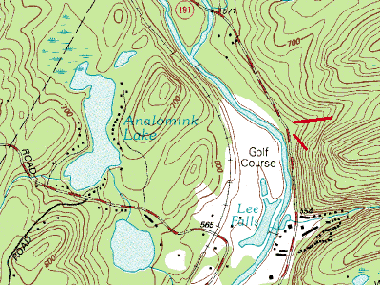
|
|
The layout of the two tows (in red), with the resort just south of this area. Image provided by Kevin Whipple.
|
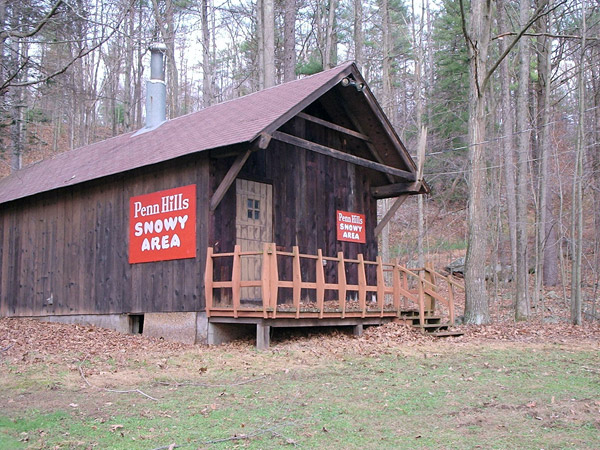
|
|
The base lodge, which still stands and gets used by the resort. “It was small with a round fire pit in the middle of it,” Kevin writes. “Steerable sleds were stored here on my visit.” Photo provided by Kevin Whipple.
|
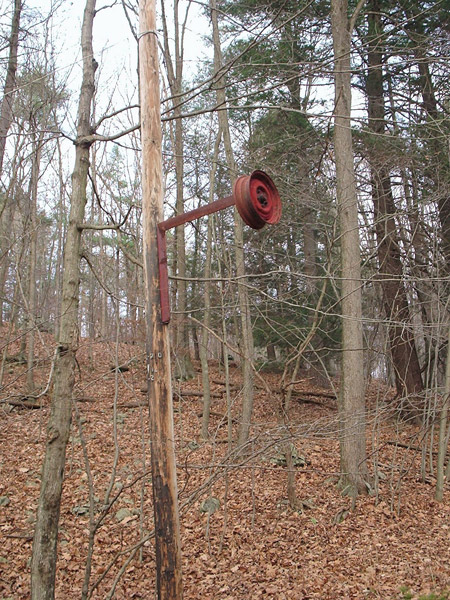
|
|
One of the wooden towers with a sheave wheel still attached. All of the towers and sheaves were still intact for the primary tow, Kevin notes. The shorter tow may have used natural trees for towers. Photo provided by Kevin Whipple.
|
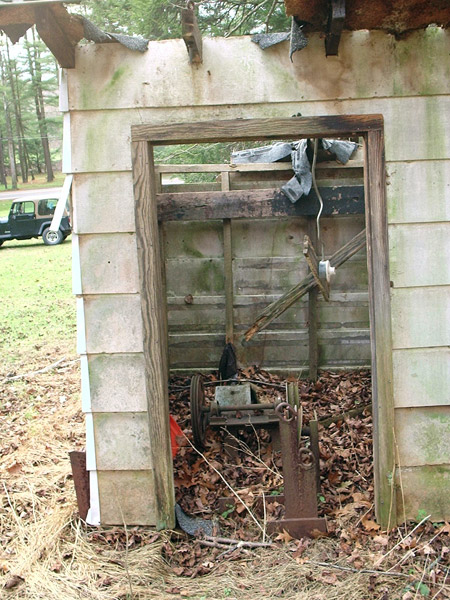
|
|
The base shack for the primary tow’s components. Photo provided by Kevin Whipple.
|
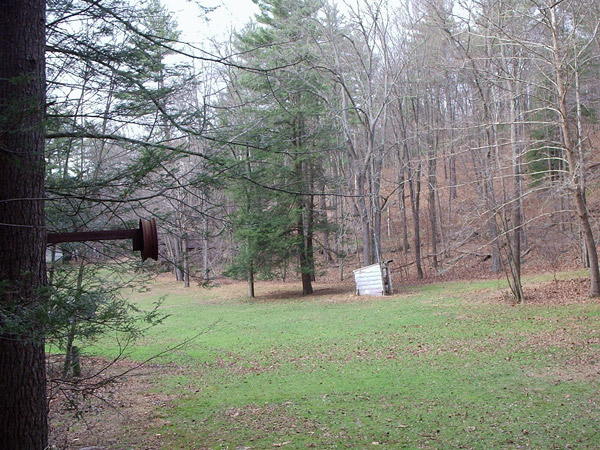
|
|
Looking down the towline of the shorter tow with one of the sheaves attached to a tree, and the base shack of the primary tow in the background. Photo provided by Kevin Whipple.
|
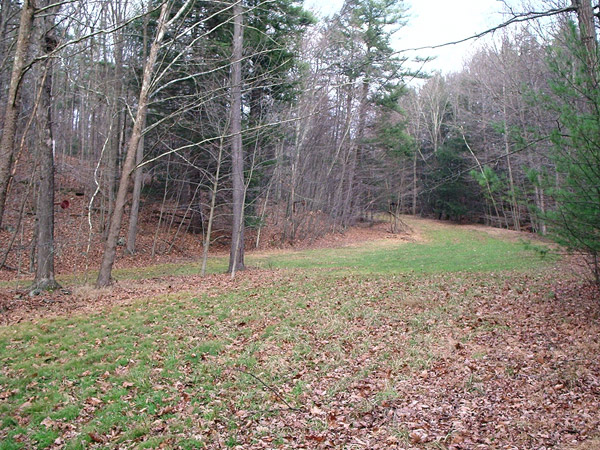
|
|
Looking up the main slope from the base. “Notice the wooden towers and sheave wheels still standing alone the towline,” Kevin writes. “This tow terminated at the pine tree near the bend in the trail, and as you can see, the main trail extended further up the hill from that point.” Photo provided by Kevin Whipple.
|
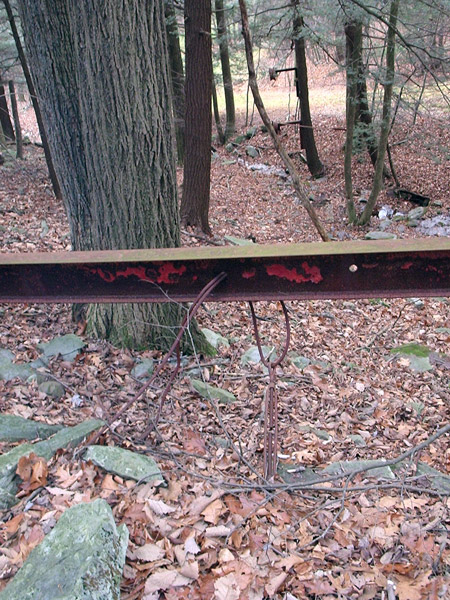
|
|
The summit anchor for the primary tow. The tow line crosses a small stream before reaching this point. Photo provided by Kevin Whipple.
|
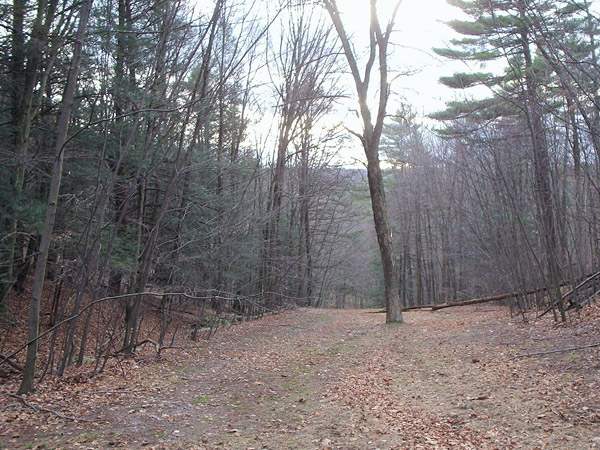
|
|
Looking down the main slope from its top. “This area was located above the main tow and would have required a hike,” notes Kevin. “The trail is still kept clear for sledding and hiking.” Photo provided by Kevin Whipple.
|
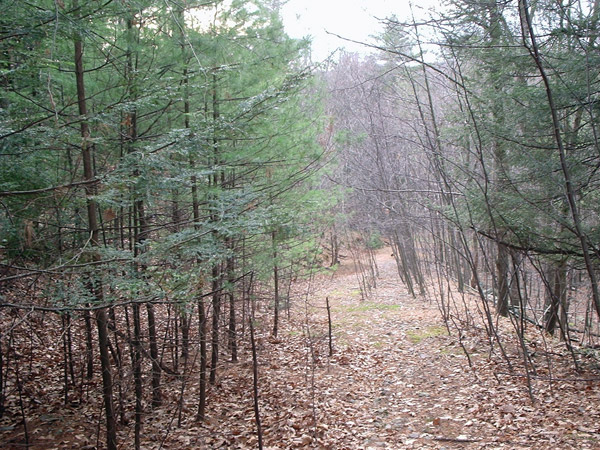
|
|
The narrow wrap-around trail that descends from the top of the main trail (hike required), and connects to the second, shorter slope. Kevin notes that this trail does not appear to be maintained at all and is quickly growing in. Photo provided by Kevin Whipple.
|
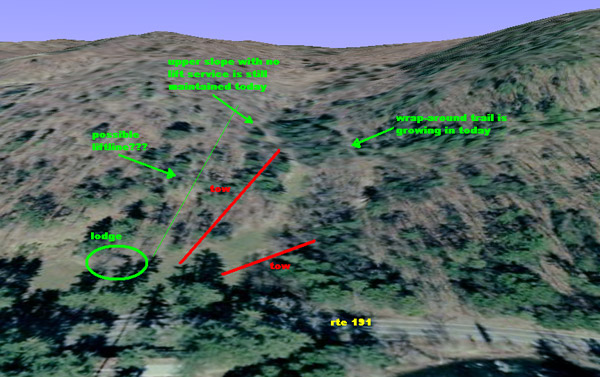
|
|
A 3-d view of the area from Google Earth, and what might have been an old liftline pre-dating the known tows. Image provided by Kevin Whipple.
|
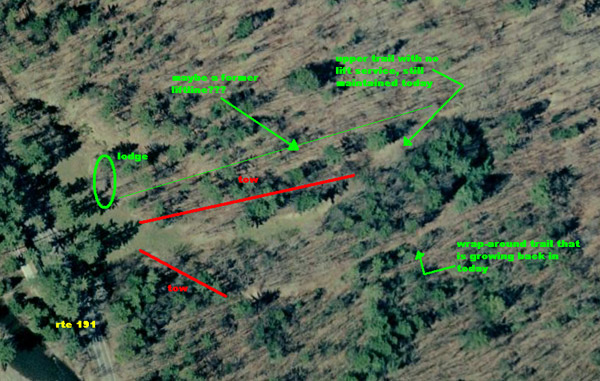
|
|
An aerial image from Google Earth that better shows what might have been a lift that pre-dated the known tows. Image provided by Kevin Whipple.
|

Join the conversation by logging in.
Don't have an account? Create one here.